| 1 | Grizzly fighting strength |
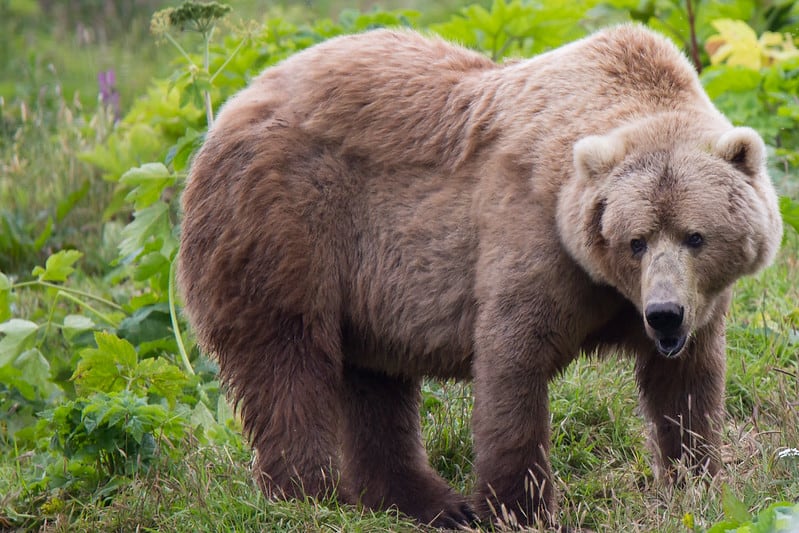
Polar bears are gigantic in a way that you cannot understand until you’ve seen one looming over you in the flesh, yet they’re also weaker than their more ancient grizzly cousin. Polar bears have dramatically more powerful hind legs and rear quarters, used to pull seals out of the ice once they’ve captured them in their mouths. Bearded and ringed seals form 90% of a polar bear’s diet, so this rear strength is utilised day in day out. However, grizzly bears have something that polar bears lack – a fully developed hump, a vast knot of muscle structures. This elevates their forelimb strength to another stratosphere.
Brown bears also have superior muscle insertions, and a more compact and robust structure than the polar bear, whose body has adapted to running lightly on sea ice. They don’t quite match a silverback gorilla or a leafcutter ant when it comes to disproportionate strength feats, but bears have been observed carrying 700 pound dumpsters like beach balls. A brown bear can upend a mountain boulder blocking its path with barely a second thought.
The hump is also designed to give a brown bear extra strength for digging, something which a polar bear never needs to think about. There are no situations in the wild where a polar bear needs to exert massive strength. This is one reason why grizzlies almost always emerge victorious from confrontations in northern Canada.
| 2 | Polar bears can’t climb trees |
Both polar bears and grizzlies lack the special rounded claws needed for ultimate tree climbing. Black bears are able to almost run up trees, whereas brown bears are much more slow and cumbersome – hence the common advice to take refuge on high branches when being pursued by one. Nevertheless, a brown bear can get the job done if push comes to shove.
Polar bears, meanwhile, have never been witnessed climbing trees, except for the cubs. Firstly, their bodies weigh 2000 pounds, of finest quality arctic blubber. The laws of physics step in here – no amount of skill can prevent branches from cracking underfoot. Most importantly though, polar bears never encounter trees in their natural sea ice habitat, for 4-6 months of the year. There’s no evolutionary pressure to evolve an ability, or even retain the modest abilities that brown bears had.
They seem to inherently lack the skills for it; in the videos of cubs climbing trees, their progress is as halting as a guy trying to handstand. Even if their bodies are physically capable, the instincts just aren’t there. So that’s what you have to do – if pursued by a marauding polar bear across the ice cap, pray that you find the floating arctic forest which David Attenborough has missed all these years.
| 3 | Polar bears dominate swimming |
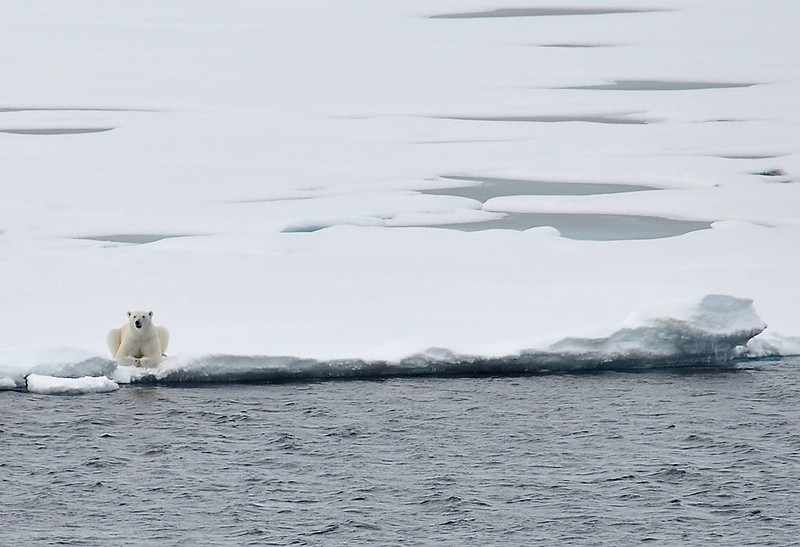
The polar bear is so adapted for underwater life that in 2021, one was observed swimming 400 miles in a single journey. Their first special ability is a slight webbing of the toes, not comparable to a duck or penguins, but enough to give each stroke added paddle power. Unlike a brown bear, the polar bear’s fur is water-repellent, with an oily sheen. This prevents the fur from ever getting matted and allows polar bears to shake themselves off instantly after leaving the ocean. Their layers and layers of body fat keep them afloat, and best yet, each one of a polar bear’s millimetre-thick hairs is hollow, adding even more buoyancy.
This is why polar bears are officially classified as a “marine mammal” under federal law, alongside whales and seals. That’s right – they’re the world’s one and only ocean bear. From 2004 to 2009, Alaskan scientists placed collars on 52 female polar bears (with the males’ necks being too thick). In the Beaufort sea north of Alaska, 50% of the bears embarked on “marathon swims” with the top bear travelling 220 miles. The average swim was 96 miles on the frigid ocean surface without stopping.
As for brown bears, they’re also excellent swimmers, achieving speeds of 6mph (versus 2-3mph in humans) and occasionally spotted swimming 25 miles from the Alaskan coast to Kodiak island. They too rely on the old blubber buoyancy method. Yet overall, their polar cousins have the edge.
| 4 | Black skin vs pink |
You’d have to be pretty idiotic not to realise that grizzly bears are brown while polar bears are white (although the fur is actually translucent). However, another difference is that beneath all that fur, a polar bear’s skin is black. The purpose is simply to absorb the sun’s rays to keep the bear warm, as black absorbs all colours of the light spectrum. It’s the opposite to houses in Spain and Portugal, which are uniformly pale, since white surfaces reflect all colours of light.
As for grizzlies? Again, they couldn’t keep things simple and stick with their fur colour – their skin is pink, both in adulthood and as a cub.
Their colour scheme makes the polar bear the ultimate Arctic survivor. The fur enables them to blend in with the icecap to sneak up on unsuspecting seals, while the skin below is superior at absorbing tiny traces of sunlight. Up to 145 days, a polar bear cub will be pink, before a slow transformation to black starts. One rumour is that on a clear day on the Arctic ice cap, a polar bear’s black nose can be seen through binoculars six miles away.
| 5 | Superior underwater vision |
Not only are polar bears superior long distance swimmers, but they also own brown bears in the murky depths of the underwater. Specifically, polar bears have a nictitating membrane. This is a clear inner eye lid, a translucent membrane which permits them vision, while protecting the inner portion of their eyes from irritation and pain caused by salt water. Camels also have this special feature, but in their case, it’s to protect their inner eyes from the harsh blowing sands of the desert.
Wouldn’t it be amazing to have one of these? It’s like the bear’s version of swimming pool goggles, but completely natural and automatic. Another purpose is preventing the polar bear’s eyes from the intense glare of arctic light.
Brown bears have no need for a third eye lid. What for? There are no sandstorms in Alaska, and unless they’re a full-throttle adventure bear who wants to reach his cousins in Kodiak island, they only have to swim across rivers.
Bonus fact: humans have a remnant of the third eyelid, called the Plica Semilunaris, which forms the initial base of the nictitating membrane’s structure.
| 6 | Weird rotary gait |
Over the years, polar bears have been accused of walking in a lumbering, plodding fashion. Their response: how would you walk if you could plunge through the floor of your house at any second?
Polar bears are a walking contradiction. They weigh 2000 pounds, yet they live on a far more delicate surface, compared to the light grizzly bear, which prances around the mountains like a character from the Sound of Music. The answer lies in their differing gaits. The polar bear has a “rotary gate”. While running, it “bounces” off both its hind legs and its front legs. Meanwhile, the grizzly bear bounces off its hind legs only.
The mechanism is complex, but quite simply, it decreases the weight a polar bear places on the ground at any given moment. It also makes the polar bear slightly slower than the grizzly, with a top speed of 25mph versus 35mph. The polar bear tends to land its right front paw in the ice first, followed by the back left paw, the front left paw, and the back right paw. It’s all very complicated, a secret which the polar bears will never share with us.
| 7 | One has a tougher skull |
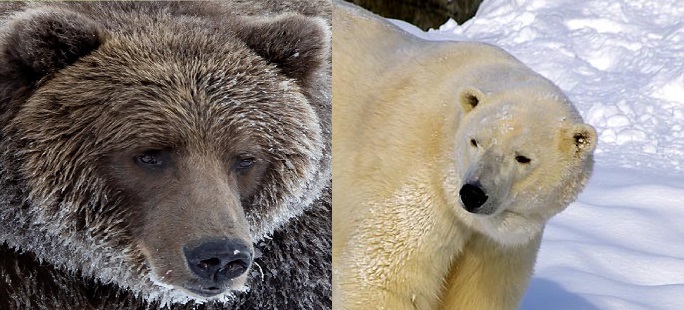
The polar bear is well known to have a stronger bite than its already fearsome grizzly cousin. After encroaching glaciers separated two ancient bear populations, the polar bear morphed into the perfect Arctic predator, with its skull changing shape. However, this was a double edge sword.
Firstly, the polar bear’s narrow, elongated skull shape is perfect for thrusting through slushy holes in the ice. A grizzly bear would never be able to get at those tasty yellow-bearded seals hiding below the ice. Without berries, they would quickly perish. On the other hand, this elongation cost the polar bear quite a few bone density points. One scientific analysis concluded that a polar bear’s skull has a ‘weaker, less work-efficient structure’.
Why? Simply because polar bears rarely have to chew heavily in their daily lives. Instead, they swallow great chunks of seal flesh whole. Their knife like incisors shear the flesh apart, while their canine teeth keep a firm hold on the prey, but unlike brown bears, polar bears never spend weeks chewing on tough vegetation like berries and roots.
Hence, the need for a thick, tougher skull has diminished. This is possibly why the larger, heavier polar bear tends to retreat when confronting a brown bear, usually near whale carcass feasts in northern Canada. To be blunt, the polar bear knows that it’s vulnerable to getting its head smashed in.
| 8 | Claws: gripping vs ripping |
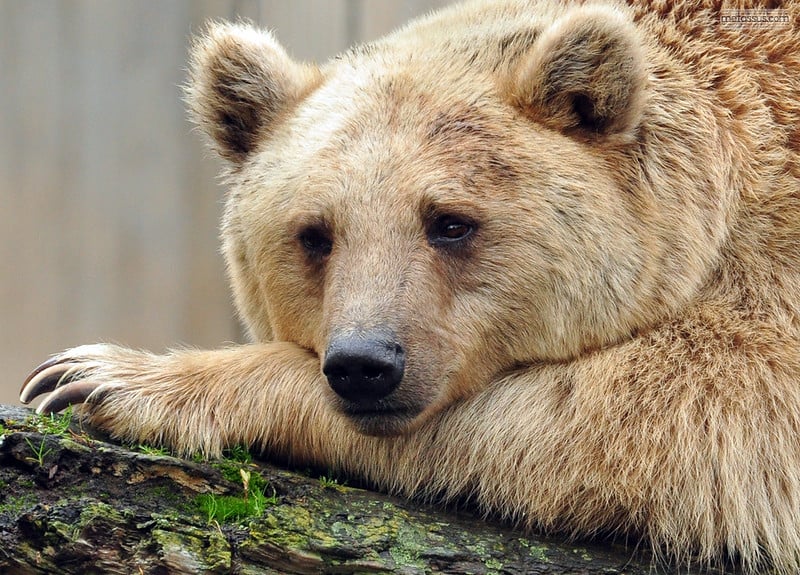
Every resident of “bear country” knows the famous saying. If it’s black, fight back, if it’s brown, lay down, and if it’s white, say goodnight. The polar bear is the most carnivorous bear, which implies the most brutal as well, but its claws are another area where the grizzly has it beat.
The polar bear’s claws are shorter and more strongly curved, although less curved than the tree-climbing black bear. The polar bear’s goal is to grip the slippery ice cap more effectively, and hang on to slippery seals. They initially grab the seals with their long snouts, and finish them off with their sharp incisors. The claws are more designed for gripping rather than mauling, unlike a grizzly, which has a wider variety of potential prey: elk, moose, deer, bison.
More importantly, the omnivorous grizzly bear has to dig for roots and shrubs when berries and salmon are unavailable. Then there’s digging out their hibernation dens, where a sharp set of tools is vital. The polar bear’s claws average at 3.5 inches, but a grizzly’s are 5-6 inches long, thick as cigars and longer than a man’s finger. The claws of the Kodiak bear are particularly gigantic. A similarity is that both species have non-retractable claws, unlike Siberian tigers, for example.
| 9 | Hollow hair light |

Remember the hollow hairs we mentioned, which keep a polar bear floating like a life raft? They also change a polar bear’s appearance. They explain why a polar bear has clear fur, yet clearly appears to be white to almost everyone. The polar bear has a thick coat of outer “guard” hairs, each 5-15cm long, on top of a thicker undercoat of shorter fur.
When viewed under a microscope, each longer polar bear hair has tiny bumps visible. These are light scattering particles. When beams of UV light penetrate into the hollow core of a hair, they bounce off these bumps and break into smaller beams. These zoom away in all directions before bouncing off the light-scattering particles once again, filling the entire hollow hair with light.
The process repeats itself in every single individual hair. The polar bear’s entire fur is illuminated, in a process called luminescence. They don’t quite glow in the dark, but it creates the illusion of whiteness. The goal is to help a polar bear blend into the ice cap, so that seals and walruses don’t anticipate them.
Brown bears, meanwhile, live in forest steppe environments and have no reason for such luminescent hairs, which they probably laugh at and call a lame gimmick.
| 10 | Polar bears sleep longer |
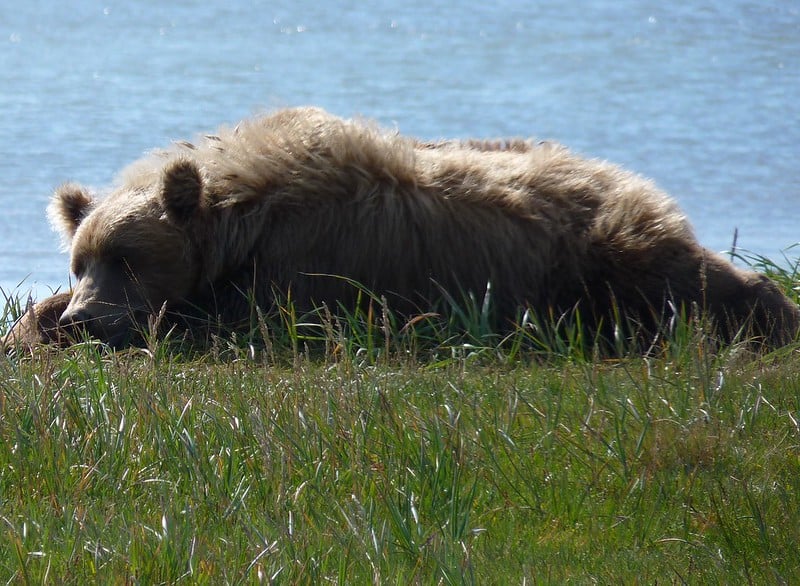
Your average local grizzly bear sleeps for only 4 hours a night during his active feeding mode in spring. The grizzly has things to do – gathering berries, hunting deer, swiping at passing vehicles – and after 5 months of sleepy hibernation, there’s no time to lose. A grizzly bear can eat for 20 hours straight during the peak feeding season, gobbling down 84,000 calories per day.
Polar bears, meanwhile, are less extreme. In fact, the white, loveable polar bear sleeps for 7 to 8 hours a night just like a human being, with no hibernation at all. Scientists have spent much time on the ice cap observing polar bears, during the bright summer months when everything is nicely illuminated and the icecap transforms from a dark howling nightmare to a sunny, shining wonderland.
Like humans, polar bears create beds, by digging out a shallow sleeping pit in the snow, typically measuring 1.5 metres in diameter and 0.5 meters deep. They even use pillows, such as their own paws.
Polar bears prefer to sleep during the day than night, which is odd considering the lack of natural predators they have. They’ve been observed taking 1 to 2 hour naps as well, proving that humans and polar bears may well be natural kinfolk.

Leave a Reply